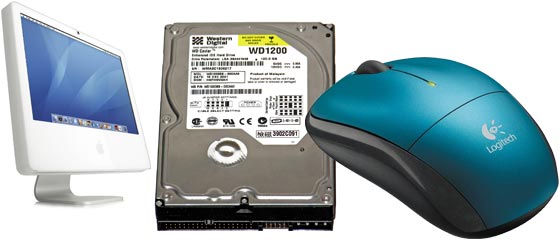 ![[Header]](../XuShared2/Line3.jpeg)

Add a Comment (Go Up to OJB's Blog Page) FilingEntry 286, on 2006-02-16 at 21:25:55 (Rating 1, Computers) I have been spending some time fine-tuning the structure of folders on my computer (a Mac PowerBook G4). I have hundreds of thousands of files on the 80G internal disk, and need a quick way to find them. Spotlight (Apple's search system) helps, but it often produces too many results, with a lot of irrelevant stuff, and its also hard to use it to search for documents relating to a particular topic.
So here's my scheme. I use the computer for several purposes. First to create programs, web sites, databases, and other project material. Second, as a storage area for interesting information on many topics. Third, as a storage system for music, podcasts, movies, photos, and other media.
My first aim was to make sure that all important information is contained within my home folder. Mac OS X naturally stores documents there anyway. Documents are usually stored in the Documents folder, settings in the Library folder, etc. So unless the user really tries, the system naturally stores all data within their home folder.
The second was to balance breadth and depth of the directory structure. When I open a folder I don't want too many sub-folders or files there. Its too hard to find the one you want. I also don't want to open too many folders within folders to get to the item I want. I decided to have less than 10 major areas, leading to 2 levels of sub-folder, then the documents. I also aimed for a maximum of about 40 items per folder. I preferred to be able to see all items without scrolling, but sometimes that wasn't practical.
The other requirement was to have related documents together, regardless of their source, and to use a natural grouping scheme, based on their content, not their type, date, etc. I also wanted to avoid having a scheme which naturally lead to more than one logical location for a document. For example, if I had a folder for email attachments, and another for information related to astronomy, where do I put an email attachment about astronomy?
So I finally settled on a system which seems to work. I have these major folders inside my home folder: Documents, Info, Library, Music, Movies, Pictures, Projects. Note that most of these are part of the standard Mac OS X scheme, anyway. Inside each of these I have a sub-folder, with further sub-folders. The idea is that all documents can be found 3 levels deep. For example, to find information on the Milgram experiment I click Info, then Science, then Psychology, then Milgram Experiment (the document itself).
Each subfolder of the top 7 main folders has 30 to 40 items, so its easy to see the item you want. By using this I can store 7 x 40 x 40 x 40 which is 448,000 documents. Or if I need to open notes on my blog database I open Projects (which is the only large folder with over 300 items), then Blog Database, then Notes, then the item itself: Blog Notes. Sometimes the OS forces a different structure, for example in the Library, but I don't access items there directly very often, anyway.
I have parallel structures to this in my email and web bookmarks. For example I have an astronomy section in my folder structure, in my email mailboxes, and in my bookmark hierarchy. The whole system works quite well, I can usually access any item within 5 seconds, which isn't bad considering the number of items being stored.
So there's the scheme I have developed after almost 30 years as a computer user. Maybe you might find this useful, or if you have some good ideas yourself, leave them as a comment.
 There are no comments for this entry. 
You can leave comments about this entry using this form. To add a comment: enter a name and email (both optional), type the number shown above, enter a comment, then click Add.
Note that you can leave the name blank if you want to remain anonymous.
Enter your email address to receive notifications of replies and updates to this entry.
The comment should appear immediately because the authorisation system is currently inactive.
![[Comments]](../XuShared/Comment1B.jpeg) ![[Preview]](../XuShared/Comment6B.jpeg) ![[Blog]](../XuShared/Up2B.jpeg)
|

![[Comments]](../XuShared/Comment1B.jpeg)
![[Preview]](../XuShared/Comment6B.jpeg)
![[Blog]](../XuShared/Up2B.jpeg)